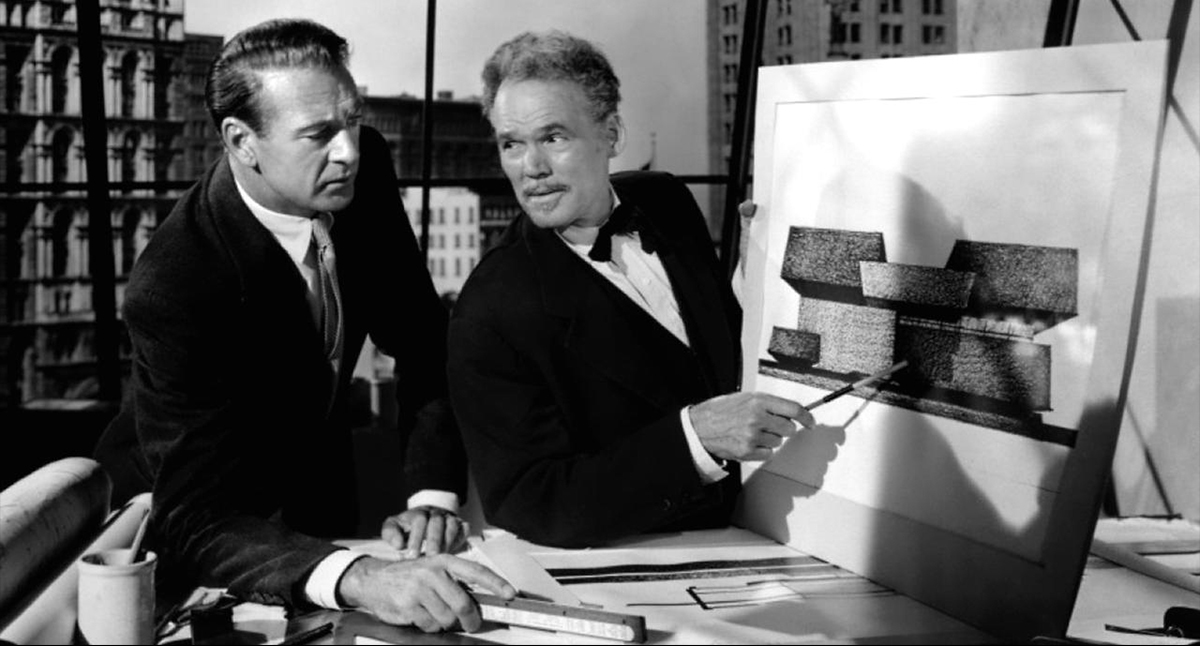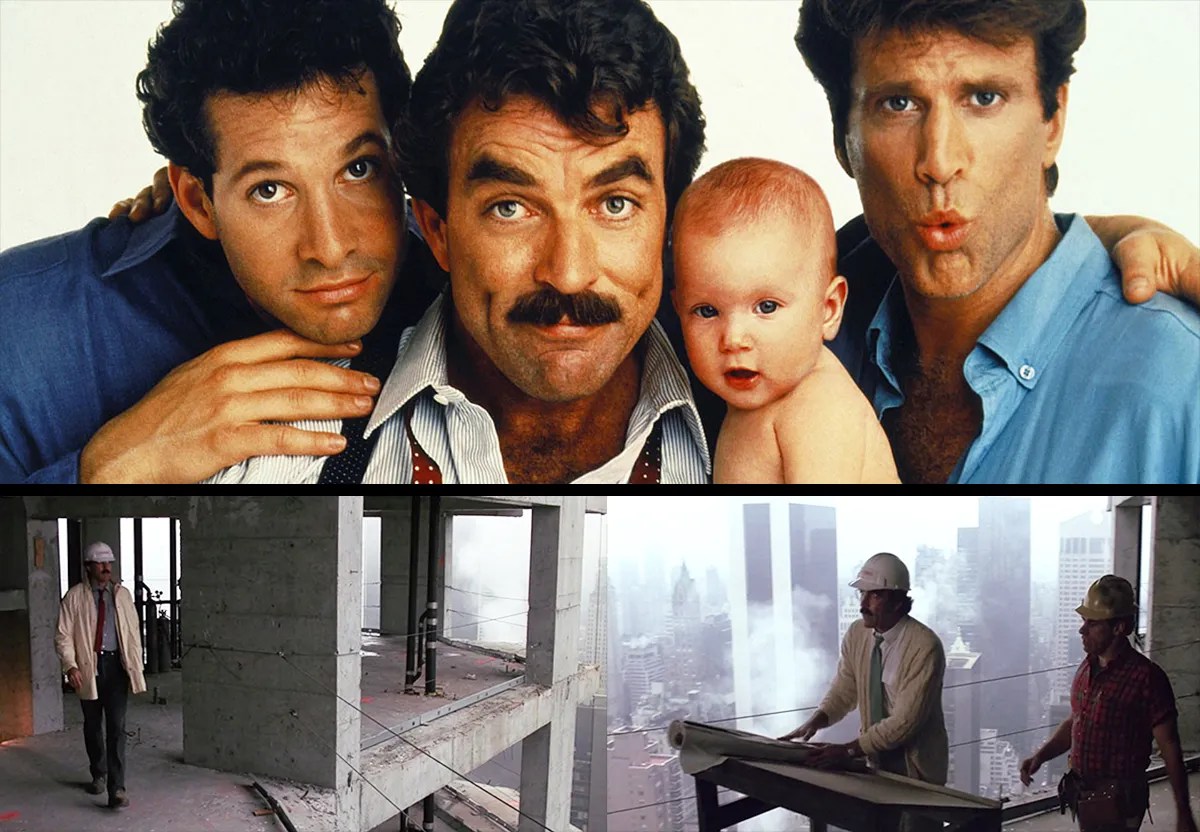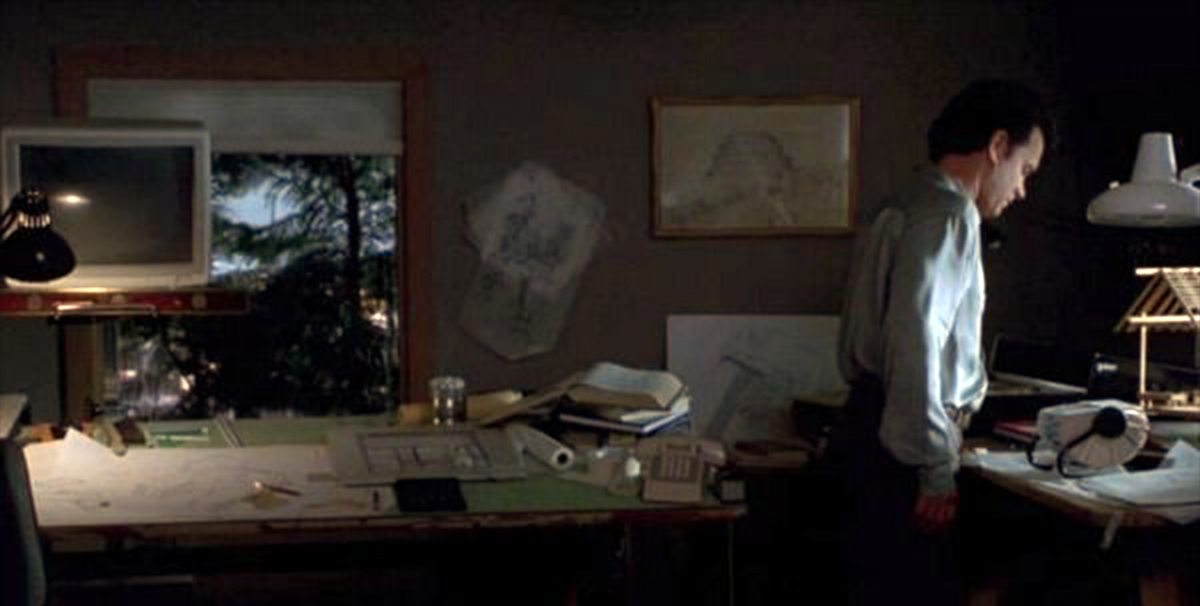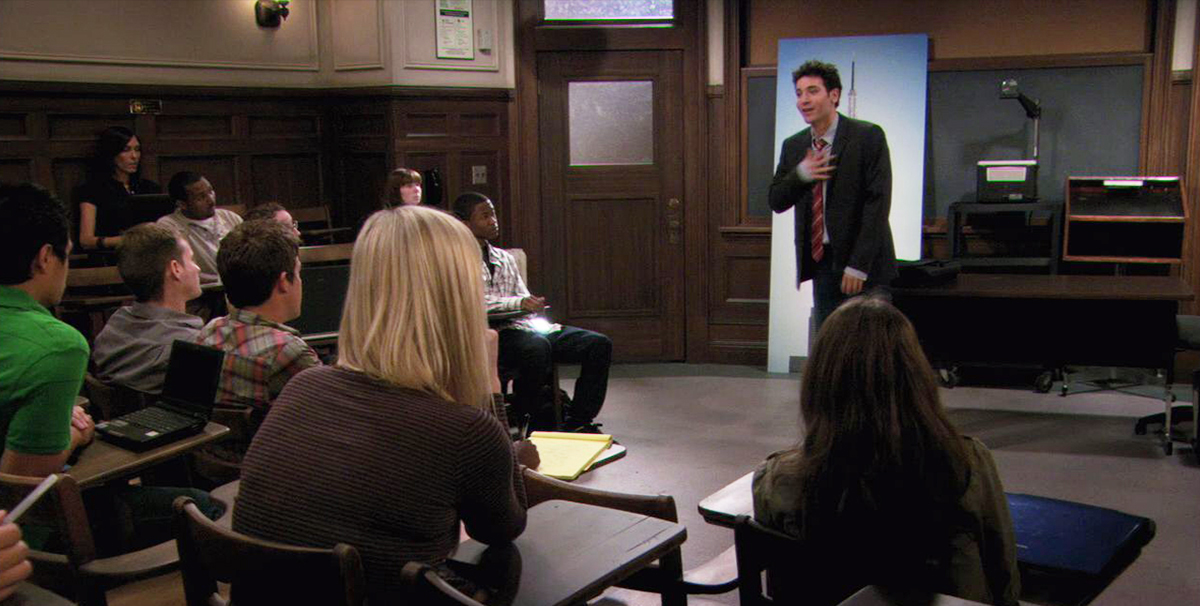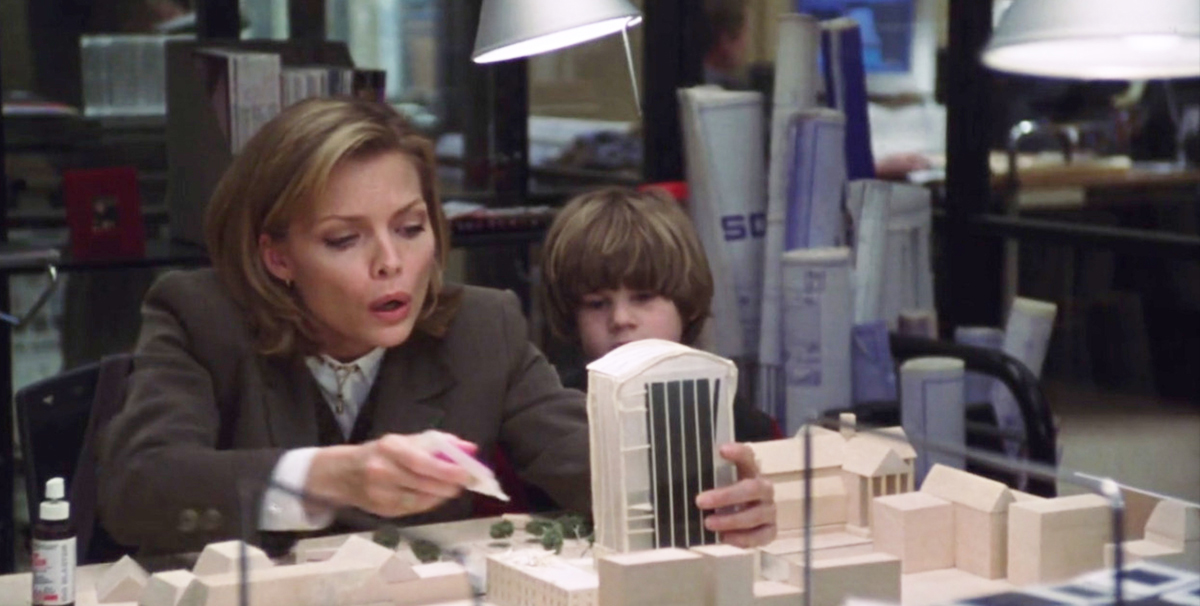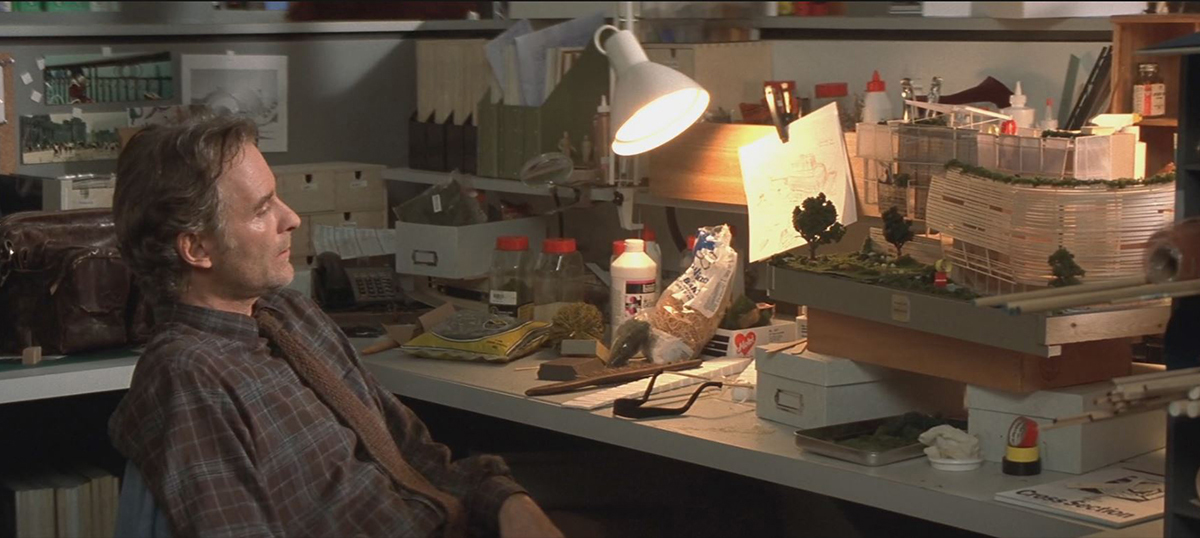As a profession, architects have been portrayed in various movies and television series for almost as long as the mediums have been around. I thought for today I would hit some of the titles that portray architects in entertainment media.
I am going to skip maybe some of the more obvious and well-known titles like The Fountainhead (1949), The Towering Inferno (1974), and Two for the Road (1967). I think these are among the most well-known representations of our profession on film. Although I must admit, I have only seen 2 of these three films. There are also some of the more obscure portrayals that seem to occur quite often in the 1980’s and 1990’s era. It seems to me that there are a plethora of architects on film in those 20-25 years from 1985 to 2005 or so. In that time frame, we seem to run the gamut of types. While I did find some interesting statistics on how the general look of an architect was portrayed in that time (white male with dark hair and brown eyes was the majority), I think the character of those architects is widely distributed. We can be mentally unstable to comical to starving artists. It is quite the array of personalities. While I suppose this does imitate the variety of characters in the actual profession, I am not sure we are always represented in the best light. Even worse, it seems our depiction seems to decrease in what I might call “respectability” as time passes by. Now that is not entirely true, but it does seem that while we are usually presented as desirable, engaging, and possessing a certain mystique, it is not always presented as in earlier times. But I still find some characters worth our profession in some form or another. I am going to spotlight a few that I can relate to or that do a decent job of representing. None of them seem to be anywhere near 100% on target, let’s be honest.
One of my favorite things about the representation of architects in movies is always our drafting boards, models, and hand drawing work. This is still so prevalent today, which makes me consistently laugh out loud. While I do know that some architects still possess drafting boards, there are typically not offices full of them with no computers to be seen. Oh! the hilarity. Another interesting range of representation is our income. In some instances, we are wealthy entrepreneurs and in others, we are starved paupers. While I suppose that may be the case, I really hope that the disparity is not that great across the profession. I really hope that no one in the profession is severely struggling.
I think maybe the first movie I remember having an architect was 3 Men and a Baby. This late 80’s comedy really did not emphasize the “architect” aspect of the character, but I recall that Tom Selleck was an architect. He was on a job site during the movie, but not much more attention was given to his profession of architect.
Sleepless in Seattle (1993)
The main character played by Tom Hanks plays Sam Baldwin, an architect in Chicago who has recently been widowed left with his young son. In an effort to restart his life, he moves to Seattle. The involvement of architecture in the romantic comedy is subtle but also adds to the movie from my viewpoint. One of the amusing scenes to me is early in the film when they are in a high-rise in Chicago in the architect’s office. Here we get to see the old school idea of what an architect’s office is like. Not a computer in sight. Now, this was 1993 and computing was very new still, I suppose, but in an office that large, I would expect more technology at that time. But architecture throughout the film is interesting to me. The houseboat in Seattle is ideal. The significance of the Empire State Building, of course, cannot be ignored. His site visit with a contractor and the complaints about the clients is quite realistic. All of these small things provide some architectural feel to the film. While the romance story may seem trite and transparent, I still like the small ways it presents the profession.
How I Met Your Mother (TV Series 2005-2014)
This television comedy is on my list due to the partially realistic portrayal of an “early” architect’s career. The main character of the series is Ted Mosby, who is a young architect working his way through his career as an architect. Over the 9 seasons of the show, it is not always about the profession of architecture, but throughout I think many of the career trajectory struggles and internal conflicts are relatable. Ted works for a large firm, goes out on his own unsuccessfully, begins a teaching career, and creates his dream project all in the span of the series. While I know that all of those things may not be realistic or realistically represented in the show, I think the notion of cycles within a career, the struggles to achieve success, and even how we as a profession measure that, are all relatable topics. Now since this is a comedy series, they are not always dealt with in a plausible manner, but the underlying meaning is there. Also, I think that some of Ted’s personality traits are similar to architects in the real; sometimes pretentious, a stickler for semantics, full of random information, and small amounts of obsessiveness; all character traits I see all the time in myself and my colleagues.
One Fine Day (1996)
In this film, Michelle Pfeiffer plays a single mom who is an architect. The movie follows her through a very tumultuous day in her life, fulfilling both personal and professional roles. This movie came out right as I was finishing up my undergraduate degree, so it was interesting to see a “real world” notion. Again this was not a great portrayal of the profession, but I was not aware either. Little did I know how much I might be able to relate to this type of day some 20 years later as a single parent. While I am not going to infer this movie got things correct with regards to our profession, the one thing about this movie that always stuck out to me was when she is in a meeting with some “difficult” clients, and she whips out her pen to draw a new solution, and this ends up landing her the project. I must admit I do not remember the quality of the drawing or any such thing, just the fact that it happened. There were lots of models of projects, and she crushes one on the way to her presentation. I could relate as that feeling from just completing studios where that was my greatest fear in life!
Life as a House (2001)
This one is a killer. For me, this movie always tears me up emotionally. It is not what I would call a “happy” movie. The story revolves around Kevin Kline, who is not really an architect but works in an architecture office until he gets fed up with the working conditions and his bosses. There is a scene in which he rampages through the office with a large roll of drawings demolishing countless project models that he has built for the firm over the years. On the one hand, this is quite satisfying, and on another, completely horrific. So he quits his job and decides to complete his dream house project, a home that he has designed for his family on a lot along the ocean. He builds the house himself with the reluctant help of his troubled son. Of course, over the duration of the project, they heal their relationship and, in the process, create a beautiful residence. I like the aspect of creating and building represented in this movie. While it is not solely architecturally focused (it’s more about family), the fact that all of this drama occurs over the process of building this house makes it unique, applicable and relatable. I have always wanted to construct my own house. Just maybe not as large as this one.

While there are certainly others I could write about, I will cut this off for now and present you with my running list of Architects represented in Film and Television. It’s a pdf that you can use. If you have any to add to this list, please let me know. Note, I am not by any means providing this list as recommended viewing. I can attest that some of these movies are complete garbage. The only real requirement for this list is that there is an architect represented. Also, these are all fictional portrayals, no documentaries or actual architects on this specific list. That is another list entirely. Part of that list is here.
Until next time,

